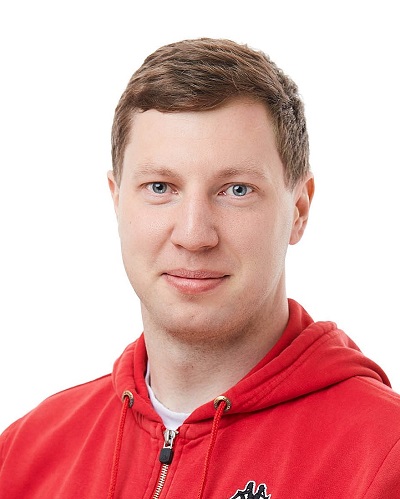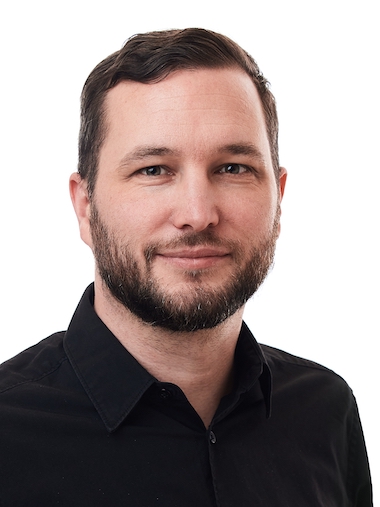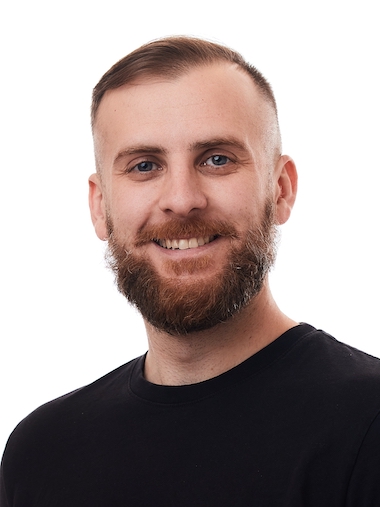Study Guide
This study guide contains information about the implementation of the course. If you ever have any question about something in the course, look for the answer in this study guide or one of the other pages it refers to. If you can't find the answer to your question, email the course coordinator.
- Course name
- Web Development Fundamentals
- Ladok code
- TGWK12
- Credits
- 7.5
- Year
- 2022
- Course coordinator
- Peter Larsson-Green
- Examiner
- Jérôme Landré
- Canvas Room
- Web Development Fundamentals
Introduction
In this course you will learn what the web is and how you can create web applications running on it. below displays the architecture of a typical web application.
More specifically you will learn how to create a web application to which a single user can login to modify the resources on it, such as blog posts and guestbook posts. To accomplish this your web application will use an SQLite database to store the resources and the web framework Express to handle incoming HTTP requests. To avoid spending too much time on the graphical design of the web application you will also learn how to use a CSS framework with pre-styled graphical user interface components you can use. Your web application must of course also be secure, so you will also learn about common vulnerabilities in web applications and how you can prevent them.
Prerequisites
At course start you are expected to already possess knowledge corresponding to the prerequisite courses mentioned in the Course Syllabus. These are either those shown in below.
Or those shown in below.
Teachers
Here are short presentations of the teachers involved in the course.
Peter Larsson-Green

Course coordinator, lecturer. Has studied and followed the development of the web since 2004 and received his Master of Science in Computer Science at Linköping University in 2014. He has been working as programming teacher (part time) since 2010 at both Linköping University and Jönköping University.
- Email: Peter.Larsson-Green@ju.se
- Phone: 036 - 10 17 35
- Website
Jérôme Landré
Eveline Ingesson

Lab assistant. Graduated User Experience Design student now working as teacher at JU.
Hasan Khalaf

Lab assistant. Third year student studying the bachelor program Software Engineering and Mobile Platforms.
Garrit Schaap

Lecturer, lab assistant. Experienced web developer currently working as teacher at JU.
- Email: garrit.schaap@ju.se
- Website
Jasmin Jakupovic

Lecturer. Program manager for the bachelor program Software Engineering and Mobile Platforms.
- Email: jasmin.jakupovic@ju.se
- Phone: 036 - 10 12 16
- Website
Susanne Smithberger

Lecturer, seminar leader. Lecturer at the Department of Language, Aesthetic Learning and Literature at JU.
- Email: susanne.smithberger@ju.se
- Phone: 073 - 910 16 90
- Website
Intended Learning Outcomes
The intended learning outcomes of the course are found in the Course Syllabus. Below is a table showing how the examination tests cover the intended learning outcomes and which teaching activity help you learn which intended learning outcome.
| Intended Learning Outcome | Examined Elements | Learning Activities |
|---|---|---|
| Display an understanding of the fundamental building blocks of the web (HTTP and HTML). | Project work Written examination | Recorded lecture: Internet Recorded lecture: Web Applications & HTTP Recorded lecture: HTML Recorded lecture: Character Encodings Tutorials Lab sessions |
| Display an understanding of common security concerns in web applications. | Project work Written examination | Recorded lecture: Cookies and Sessions Recorded lecture: Designing Account Systems Recorded lecture: Web Security Tutorials Lab sessions |
| Display an ability to construct web pages using HTML5, CSS, and CSS frameworks. | Project work Written examination | Recorded lecture: HTML Lecture: CSS Tutorials Lab sessions |
| Display an ability to program in JavaScript. | Project work Written examination | Recorded lecture: JavaScript Recorded lecture: Asynchronous Programming in JavaScript Tutorials Lab sessions |
| Display an ability to construct web pages using Node.js. | Project work Written examination | Recorded lecture: Using Shells Recorded lecture: Node.js Recorded lecture: npm Recorded lecture: Express Basics Recorded lecture: Web Applications in Express Recorded lecture: Handlebars Tutorials Lab sessions |
| Display an ability to construct database-backed web applications. | Project work Written examination | Lecture: Database Recorded lecture: Using SQLite in Node.js Tutorials Lab sessions |
Learning Activities
Here are short introduction to the learning activities offered in the course.
Recorded Lectures
In the beginning of most weeks you will be encouraged to view some recorded lectures. These will be quite theoretical and will teach new you things you can use when building a website.
Tutorials
Some weeks there will be a tutorial session where the teacher will show you how to use what has been taught in the recorded lectures in practice. you can think of these as traditional lectures given on campus, but with no lecture slides and mostly coding.
Lectures
In the course there will be a few traditional lectures given in a lecture hall on campus.
Seminars
To help you write a proper project report, there will be a 1 hour lecture on academic writing, and then a 1 hour seminar you can attend to become even better at academic writing. All students can't attend the seminar at the same time, so it is given at two different times, and you may attend one of them. To distribute you, join the Seminar Group on Canvas corresponding to the time you want to attend.
Lab Sessions
Each week you may attend a 4 hours lab session. At the lab session you may ask the teacher there for help with your exercises and project work.
There are 5 different lab sessions each week, but you may only sign up for one of them. To distribute you, join one of the Lab Groups on Canvas. First come, first served.
Attending more lab sessions
You may attend the other lab sessions if there is room for it, but the teacher there must of course prioritize helping the students that have signed up for that lab session.
Examination Tests
The course contains two examination tests.
1. Written Examination
2 credits, graded U, 3, 4, and 5. More information is available on the Written Examination page.
2. Project Work
5.5 credits, graded U, 3, 4 and 5. More information is available on the Project Work page.
Final Grade
To receive a final grade on the course you need to pass both examination tests (Written Examination and Project Work). The final grade will be based on the lowest grade of the Written Examination and the Project Work, but these grades will also be marked as weak or strong. If one of the grades is lower than the other and has been marked as strong, the final grade will be the lower grade + 1. Examples:
- A
strong 3and aweak 4gives you4as the final grade - A
weak 3and astrong 5gives you3as the final grade
For the Written Examination, 50% of max score is a strong 3, and 70% of max score is a strong 4.
Re-examination
below shows the study and exam periods during a year. The small blue circle sectors shows when the (re-)examinations are offered in this course.Re-examination for the Written Examination is offered at the re-exam periods in January and August.
Re-examination for the Project Work is offered at the re-exam periods in January and August. If you need to know a precise date and time in advance, email the course coordinator at peter.larsson-green@ju.se. The project work will only be graded U/3 at re-examination.
If you haven't passed some examination tests after the three examination opportunities (ordinary + 2 re-exam) you need to re-take those tests the next time the course run. Note that the instructions for those tests might have changed the next time the course run, and that you should take them according to the new instructions.
Course Literature and Other Teaching Aids
- Introduction to HTTP by Launch School
- MarkSheet by Jeremy Thomas
- Eloquent JavaScript 3rd edition by Marijn Haverbeke
Time Plan
A time plan is available on the page Time Plan.
